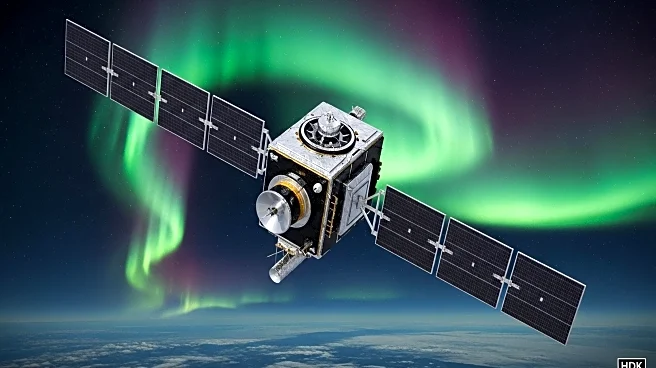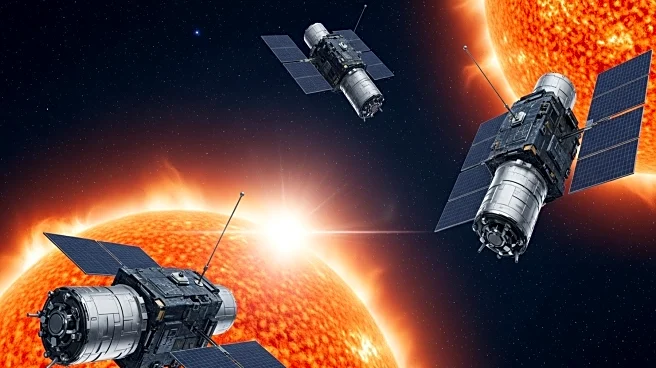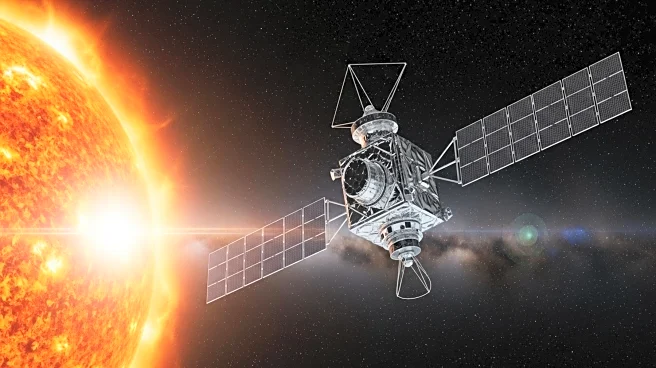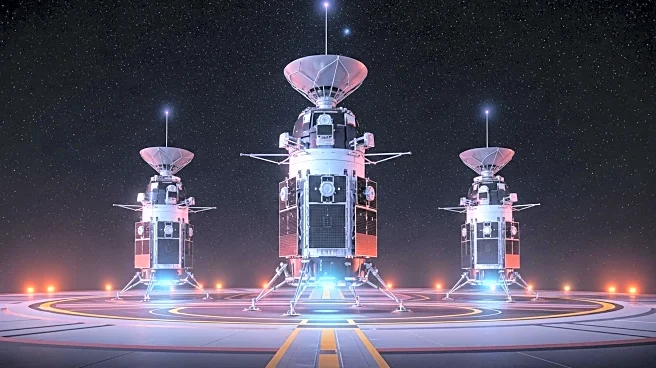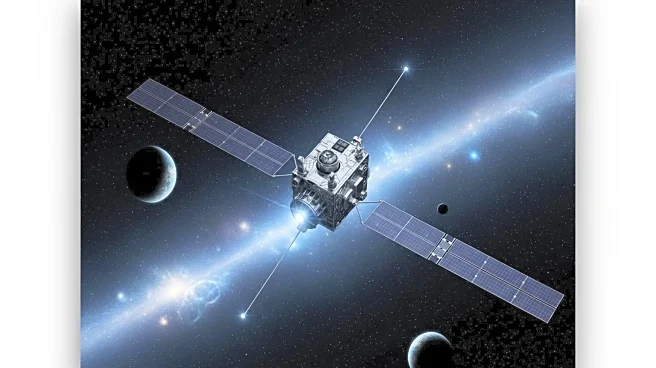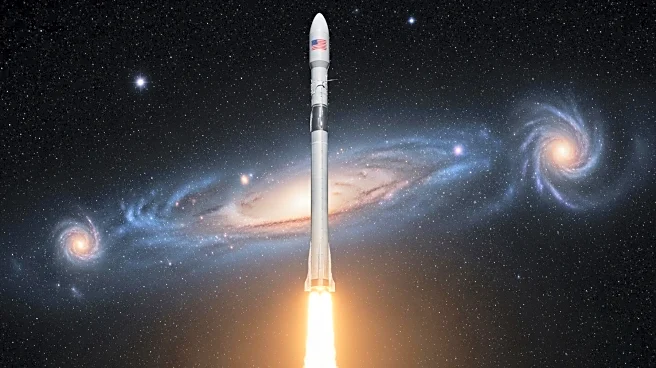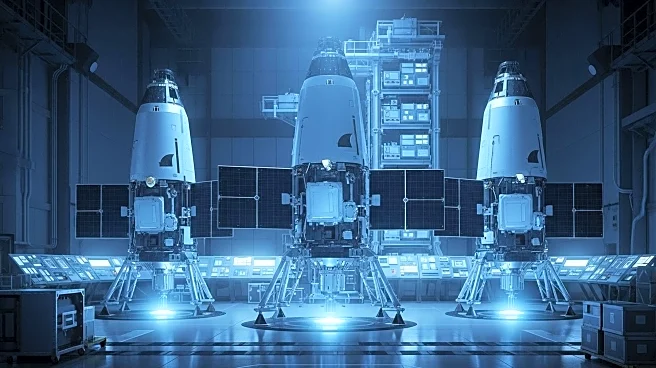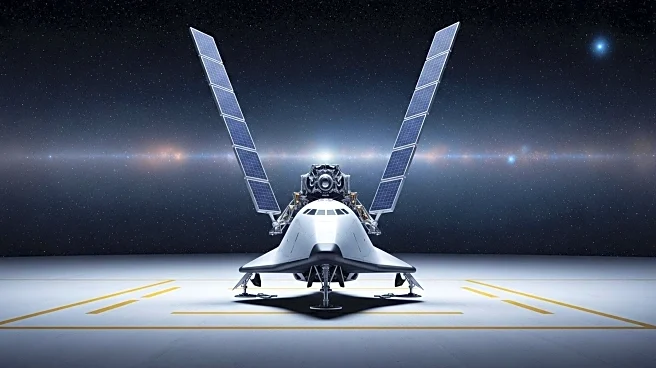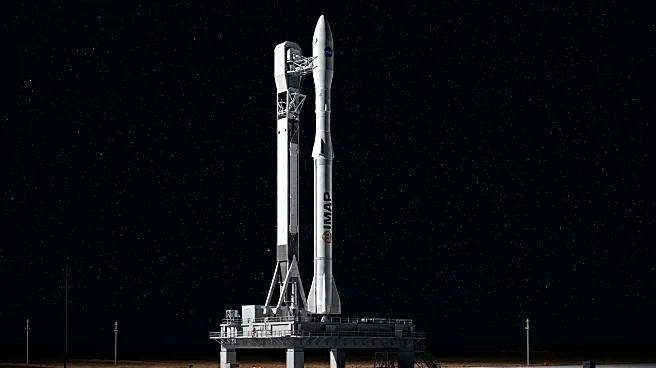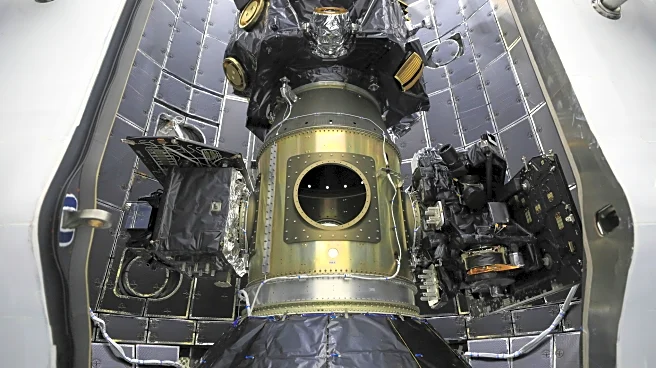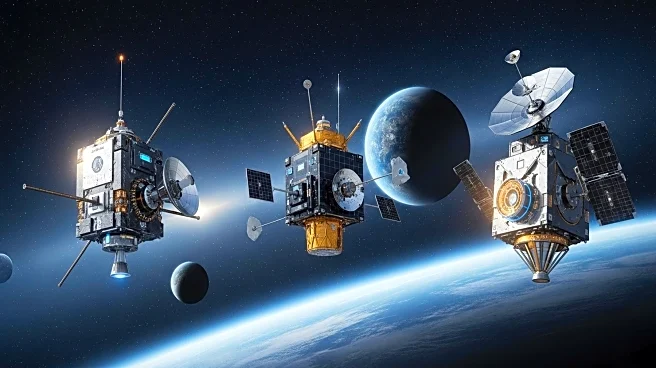What is the story about?
What's Happening?
On September 24, 2025, SpaceX successfully launched a Falcon 9 rocket carrying three significant spacecraft: NASA's Interstellar Mapping and Acceleration Probe (IMAP), the Carruthers Geocorona Observatory, and NOAA's first operational space weather satellite. These missions are designed to study the solar wind and its effects on Earth and interstellar space. The launch took place from NASA's Kennedy Space Center in Florida, with the rocket heading towards an orbit nearly a million miles from Earth. The spacecraft will measure the supersonic stream of charged particles emanating from the Sun, providing real-time observations to warn of geomagnetic storms that could impact power grids, radio communications, GPS navigation, air travel, and satellite operations.
Why It's Important?
The launch marks a significant advancement in space weather monitoring and solar science. By bundling these missions onto a single rocket, NASA and NOAA have saved millions in launch costs, demonstrating efficient use of resources. The data collected by these satellites will be crucial for predicting and mitigating the effects of solar storms on Earth's infrastructure, which is increasingly reliant on satellite communications and GPS systems. This mission also enhances our understanding of the heliosphere, the magnetic bubble created by the solar wind, which is vital for understanding cosmic radiation and its impact on space exploration.
What's Next?
The spacecraft will travel to their observing locations in halo orbits around the L1 Lagrange point, a stable region for solar science instruments. As they begin their multi-month journey, scientists will prepare to analyze the data collected, which will contribute to improving space weather forecasts and understanding the boundary between the Solar System and interstellar space. The success of this mission could lead to more collaborative launches, optimizing costs and expanding scientific research capabilities.
Beyond the Headlines
This mission highlights the growing importance of international collaboration in space exploration, as the data collected will benefit not only the U.S. but also global stakeholders in understanding and preparing for space weather events. The technological advancements demonstrated by this launch could pave the way for future missions that require precise measurements of solar phenomena, potentially leading to breakthroughs in space travel safety and efficiency.
AI Generated Content
Do you find this article useful?
